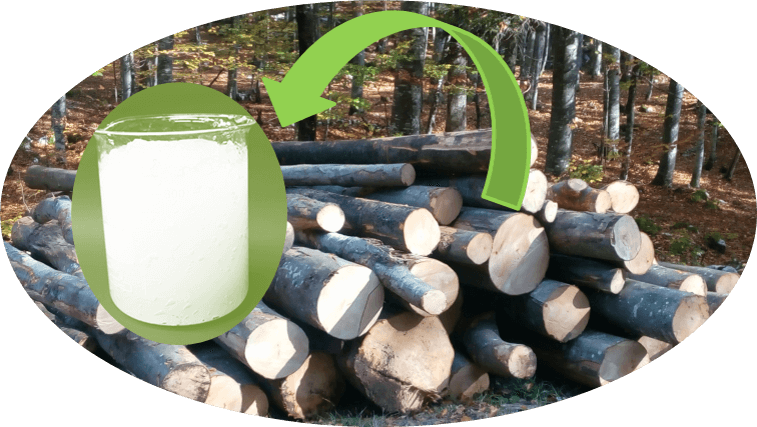Production of nanofibrilated cellulose
Location: Universty of Ljubljani, Biotechnical Faculty, Department of Wood Science and Tchnology, Ljubljana
Contact: Mr Primož Oven
Tel: +386 31 485 731
E-mail: primoz.oven@bf.uni-lj.si
Estimated value: Other
Description
At the Department of wood science and technology of Biotechnical faculty, University of Ljubljana, we have developed a process for the isolation of nanofibrillated cellulose, which roughly includes the following processing stages, raw material preparation, chemical or mechanical pre-treatment of the raw material, defibrillation and purification of the final product. The end product is nanofibrillated cellulose (cellulose nanofibrils), having diameter between 5-60 nm and a length of 0.5 to a few micrometers. Due to its favorable aspect ratio, it has a significantly larger spectrum of potential applications than nanocrystalline cellulose (not subject to this investment opportunity). The manufactured nanofibrillated cellulose, which is available like a water suspension, has a negative surface charge, extremely high tensile strength and modulus of elasticity (135 GPa), and an extremely large surface area, which allows further chemical modification of the surface, thereby ensuring compatibility with various polymer matrices. Nanofibrillated cellulose is a high-tech renewable and sustainable material from woody biomass that is harmless to the environment and organisms. Nanofibrillated cellulose can replace materials based on fossil resopurces and is thus suitable for improving the properties of existing materials and for developing completely new ones. Ensuring sufficient quantities and consistent quality and properties of nanofibrillated cellulose are key to a successful breakthrough in the industrial markets. This initiative opens up the possibility of investing in the production of nanofibrillated cellulose production in aqueous suspension in quantities of 10 to 100 kg of dry matter per day, with the whole value chain, from the raw material to the end user, already established.
Benefits for investitor
According to current international market analyzes, increasing need for nanofibrillated cellulose is expected due to the increasing demand of the paper, polymer, packaging and automotive industries, where the fastest growth and highest demand for nanofibrillated cellulose is forecasted until 2050. Market analyzes further show that the production of nanocellulose is currently concentrated in Northern and Central European plants, and there is practically no production of nanofibrillated cellulose in Eastern Europe, since in our opinion it allows penetration into international markets.
Investment value
+ 500.000 EUR
Desired form of investment and possible conditions
Upon an agreement.
Image

Development strategy
This initiative is in line with the Smart Specialization Strategy (SPS), both with the goals of action plan of the SRIP Networjk for transition to circular economy, as well as with the SRIP Smart buildings and home with wood chain. The initiative pursues the key objectives of the Development Strategy of Slovenia 2030 and ensures the traceability and origin of the wood used and the traceability of the resources whereas the nofirilated cellulose can be declared by internationa recognized certificates. The production of nanofibrillated cellulose is based on the exploitation of poor quality wood and the utilization of waste or residue wood, which contributes to the efficient use of resources and thus directly contributes to the prevention and reduction of waste generation. We estimate that the investment in production would directly generate at least 30 new green jobs, without taking in acount the multiplying effects.
Forest-timber chain activity
Forestry,
wood working and processing,
manufacture of paper and paper products.
Type of investment
Modern technology, equipment or infrastructure,
development of developmental and technical-technological solutions in the priority area of application of the smart specialization “Smart Buildings and Home with a Wood Chain” (smart houses, furniture, etc.),
infrastructure and other solutions in the field of bioeconomics (eg biorefineries, biogas, raw materials, materials and composites based on biomass from wood, ..),
solutions in the field of innovative and efficient side streams and waste wood processing into higher value added products,
sustainable development solution, circular economy, new business models.




